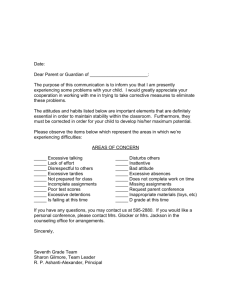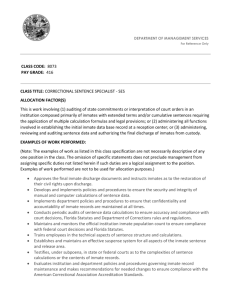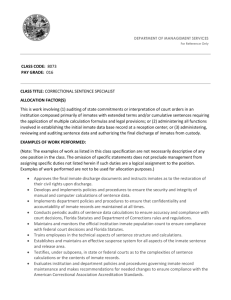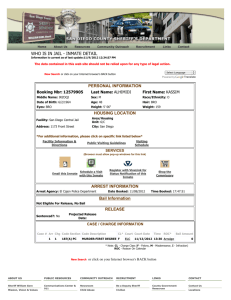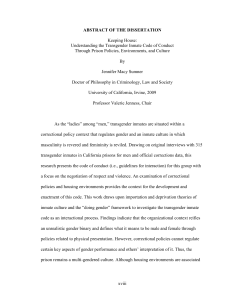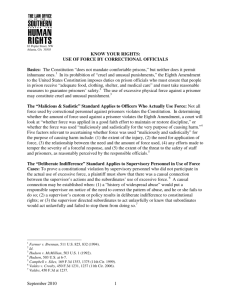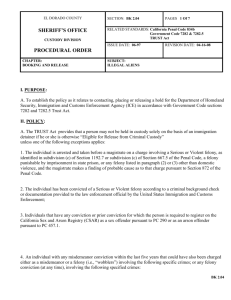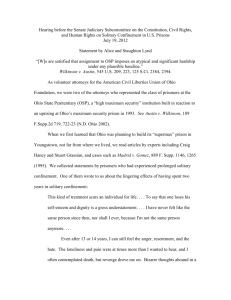CRJ 711 Issues in Criminal Justice Use of Force
advertisement
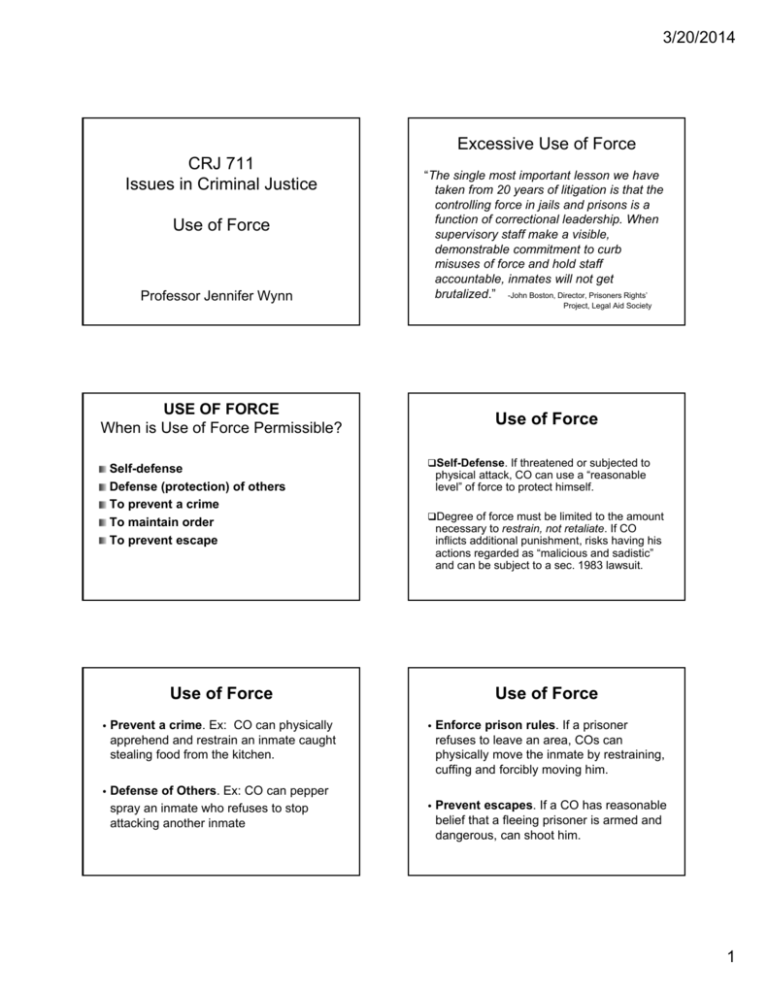
3/20/2014 Excessive Use of Force CRJ 711 Issues in Criminal Justice Use of Force Professor Jennifer Wynn USE OF FORCE When is Use of Force Permissible? Self-defense Defense (protection) of others To prevent a crime To maintain order To prevent escape Use of Force • Prevent a crime. Ex: CO can physically apprehend and restrain an inmate caught stealing food from the kitchen. “The single most important lesson we have taken from 20 years of litigation is that the controlling force in jails and prisons is a function of correctional leadership. When supervisory staff make a visible, demonstrable commitment to curb misuses of force and hold staff accountable, inmates will not get brutalized.” -John Boston, Director, Prisoners Rights’ Project, Legal Aid Society Use of Force Self-Defense. If threatened or subjected to physical attack, CO can use a “reasonable level” of force to protect himself. Degree of force must be limited to the amount necessary to restrain, not retaliate. If CO inflicts additional punishment, risks having his actions regarded as “malicious and sadistic” and can be subject to a sec. 1983 lawsuit. Use of Force • Enforce prison rules. If a prisoner refuses to leave an area, COs can physically move the inmate by restraining, cuffing and forcibly moving him. • Defense of Others. Ex: CO can pepper spray an inmate who refuses to stop attacking another inmate • Prevent escapes. If a CO has reasonable belief that a fleeing prisoner is armed and dangerous, can shoot him. 1 3/20/2014 USE OF FORCE What are the Limits to Using Force? Force cannot be used to punish or hurt. Degree of force used cannot be “excessive.” Must be reasonable and necessary given to protect, apprehend or restrain. Cannot be “sadistic or malicious” Hudson v. McMillIan (1992): Injuries do not have to be severe or excessive for use of force to be considered excessive, i.e., unconstitutional. Use of Force: Key Cases Whitley v. Albers, U.S. Supreme Court (1986): An innocent prisoner mistakenly shot in the leg during a disturbance does not suffer cruel and unusual punishment if the action of guards was taken in good faith to maintain discipline and order rather than for the mere purpose of causing harm. Hudson v. McMillan, 503 U.S. 1 (1992) Injuries do not have to be simply severe or excessive for use of force to be considered unconstitutional. To succeed, the force claims require a showing that the defendants applied force “maliciously and sadistically.” 2
